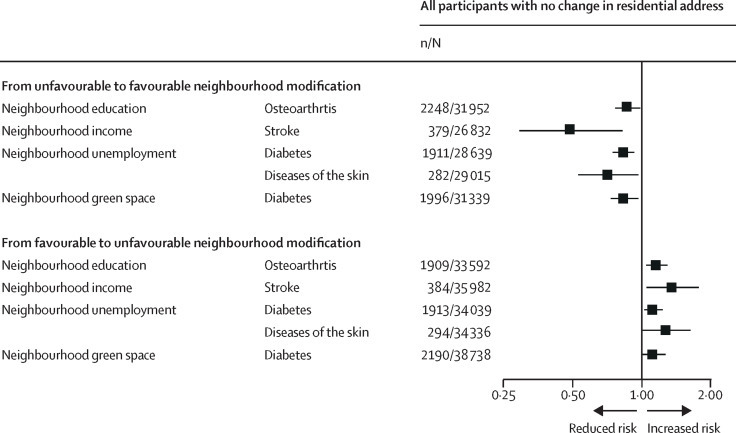Housing projects can deliver improved health outcomes. Local councils increasingly request Health Impact Assessments (HIAs) in the UK as part of validation requirements for large built environment projects which focus on improved health outcomes for residents.
Health Impact Assessments (HIAs) are a structured review of a construction project's health and wellbeing impacts on the neighbouring communities and future occupants. Environmental Impact Assessments tend to be overly focused on ecological impacts. Health Impact Assessment Assessments compensate for this.
Read more here: What is a health impact assessment for planning projects? Why should you care?
When completing a health impact assessment, applicants and their planning teams often ask about the health-improving impacts their housing project can have on communities. What kind of impact are we looking for, and what substantive impact can a housing-led or mixed-use masterplan have? More importantly, health impact assessments require evidence for the paths for effects.
Public health officials are looking at the “social determinant of health” of housing projects. Social determinant refers to influences on health that are not related to direct medical care. Therefore they look for “causal pathways” that the developers’ design team identified and used to shape the health and wellbeing of existing and future occupants. Essentially, the Health Impact Assessment will involve understanding those mechanisms and linking them to design choices and other interventions, such as contribution payments.
Pathways to improved health outcomes for housing projects
When completing a health impact assessment, try to be clear on the pathways to impact. For each pathway, the team should look for baseline data to understand the priority for impact and identify a tangible change the house project can have on this aspect, the timeframe and the scale of change. Health impacts can be negative, just as they can be positive. It is essential to be realistic and transparent.
Housing development projects can have significant positive long-term impacts. Based on benchmarked place data, PlaceChangers Site Insights can help identify current intervention potentials and indicate impacts with quantitative studies.
Below are a few key examples of categories and pathways to impact from two scientific studies.
For example, a survey by Rolfe and colleagues on tenant experience for 241 home movers done in conjunction with three housing providers in Scotland highlights different aspects of where to make an impact, including tenant experience, housing quality, and neighbourhood quality.
Improve tenant experience for improved health outcomes
The survey by Rolfe and colleagues indicates that the tenant experience contributes to residents' perceived well-being. For developers, this highlights the importance of a good ‘welcome’. For housing associations, it is clear that long-term customer service plays a major role in the satisfaction of residents.
Contextual factor | Mechanism |
|---|---|
• Previous experience and expectations of housing service • Standard of housing service (possibly including support and responsiveness) | Experience of (comparatively) good housing service reduces stress and enables tenants to gain benefits from housing as a home |
Look after housing quality for improved health outcomes
Appropriate living conditions play a major role in the long-term health and wellbeing of residents. The survey by Rolfe and colleagues also emphasised that housing quality played a significant role in supporting the health and wellbeing of residents.
Especially since the pandemic and the subsequent increase in home working, the average resident spends an increased amount of time in their own home.
For example, in England, the ONS found that “those with a household income up to £1,700 a month increased their average time working from home by 3 hours and 2 minutes a week, while for those earning over £3,301 it increased by 7 hours and 37 minutes a week” (Coronavirus and how people spent their time under lockdown: 28 March to 26 April 2020).
Contextual factor | Mechanism |
|---|---|
• Tenant characteristics (including gender, age, disability, socio-economic status, household type – these may relate to capacity) • Previous housing experience • Property quality | Quality housing provides tenants with a comfortable space in which to relax and achieve a sense of status |
Neighborhood quality influences improved health outcomes
The impacts of neighbourhood quality and urban design are also significant, but less well understood as a social determinant of health outcomes. The health impact of neighbourhood quality are also moderated by lifestyle factors, the provision of amenities within the vicinity that support a healthy lifestyle, and many other contextual attributes. Health Impact Assessments will draw on a comprehensive place baseline to identify opportunities for intervention.
Contextual factor | Mechanism |
|---|---|
• Tenant characteristics (including disability, socio-economic status and household type) | Good neighbourhood environment and supportive social/community networks around housing location reduce stress and increase opportunities for socialisation |
For neighbourhood level factors, other quantitative studies have shown the positive impacts of neighbourhood characteristics on health outcomes. A fifteen-year longitudinal study of 114,786 people in Finland by Kivikäki and colleagues showed that improvement in neighbourhood conditions over time was associated with improvements in an individual’s health and reduced risk for common health conditions, including stroke, osteoarthritis, and diabetes.

Other dimensions for improved health outcomes
The above mentioned dimensions are only part of the health improving pathways. Health Impact Assessments provide an opportunity for an in-depth review. The good news is that there are existing frameworks for Health Impact Assessments, such as HUDU or the HIA guidelines within the Essex Livewell framework, which is supported on PlaceChangers.
How can house builders influence improved health outcomes?
There are several aspects that house builders can undertake to demonstrate and actively work towards improved outcomes for residents’ health and wellbeing. This requires a long-term focus rather than looking for an immediate impact.
Invest in place evidence
Alongside a robust financial plan, invest in location services that help demonstrate to investors and yourselves the long-term merits of a development site. There are many place-based datasets, and investing in a tool that can help bring it all together for you automatically, such as PlaceChangers Site Insights saves time and costs.
Select sites with walkable access to key amenities
Develop a set of criteria for sites in order to enhance higher-quality developments. It all starts with a site search. Selecting a well-connected site and within easy reach of schools, GPs, and nature will positively contribute to residents.
Check the quality of development
In terms of materials used, but also the functional characteristics of the development. This includes space standards and future amenities that are suitable for existing and future demographics expected to inhabit the development.
Consider the additionality of the development to the neighbourhood
Do a gap analysis based on an initial baseline review of the local publication and neighbourhood factors. Look for any additional features that the development could provide to the neighbourhood. For example, is there room for open space or an accessible connection with nearby greenspace?
Listen for feedback on what the neighbourhood is like on a practical basis
Best practice dictates the use of community engagement consultation to hear the residents' voice. Are there areas which are unsafe that interventions can address as a result of the project? Is there a need for certain kinds of homes based on the demographics in the neighbourhood?
Consider prioritising contributions payments
The gap analysis and refinements for the site layout will enable the project team to determine where contributions can be most beneficial. Specific contributions should be discussed in agreements with the local authority to clarify mutual delivery.
Invest in long-term monitoring for impacts and resident satisfaction
Go beyond the New Homes Customer Satisfaction Survey by the House Builder Federation. Put in place a semi-formal review of resident satisfaction of selected housing sites several years after completion and combine this review with a look at how the neighbourhood has changed in the same period.
Developing for long-term benefit through improved health outcomes
The relationships between health and the urban built environment are poorly understood when it comes to the combination of their effects within a particular neighbourhood.
The actual health impacts are varied and will depend on a wide range of factors, such as the future population mix, cultural attitudes to lifestyle choices, and the specific characteristics of the neighbourhood.
Modern planning tools, such as PlaceChangers’ site analysis, enable projects teams to identify impact pathways as part of completion of health impact assessments online. Planning teams can tap into health-focused place reports, the ability to consult on layouts, and a structured review based on frameworks such as HUDU or the rapid health impact assessment guidance in the Essex LiveWell framework.
This, combined with the ability to generate robust place-based consultations quickly, and consistent criteria-based reviews, allows you to move ahead of other developers in the long term.
Give it a go today or ask your planning consultant to check it out.
Explore the PlaceChangers planning toolkit

PC Engagement tool - Market leading interactive planning consultations
Set up powerful 2D and 3D map surveys and polls for your planning or construction project and adapt proposals easily.

PC Site Insights tool - Place analytics tool for town planning
Make use of powerful place analytics to support briefs, engagement planning, and impact statements.
